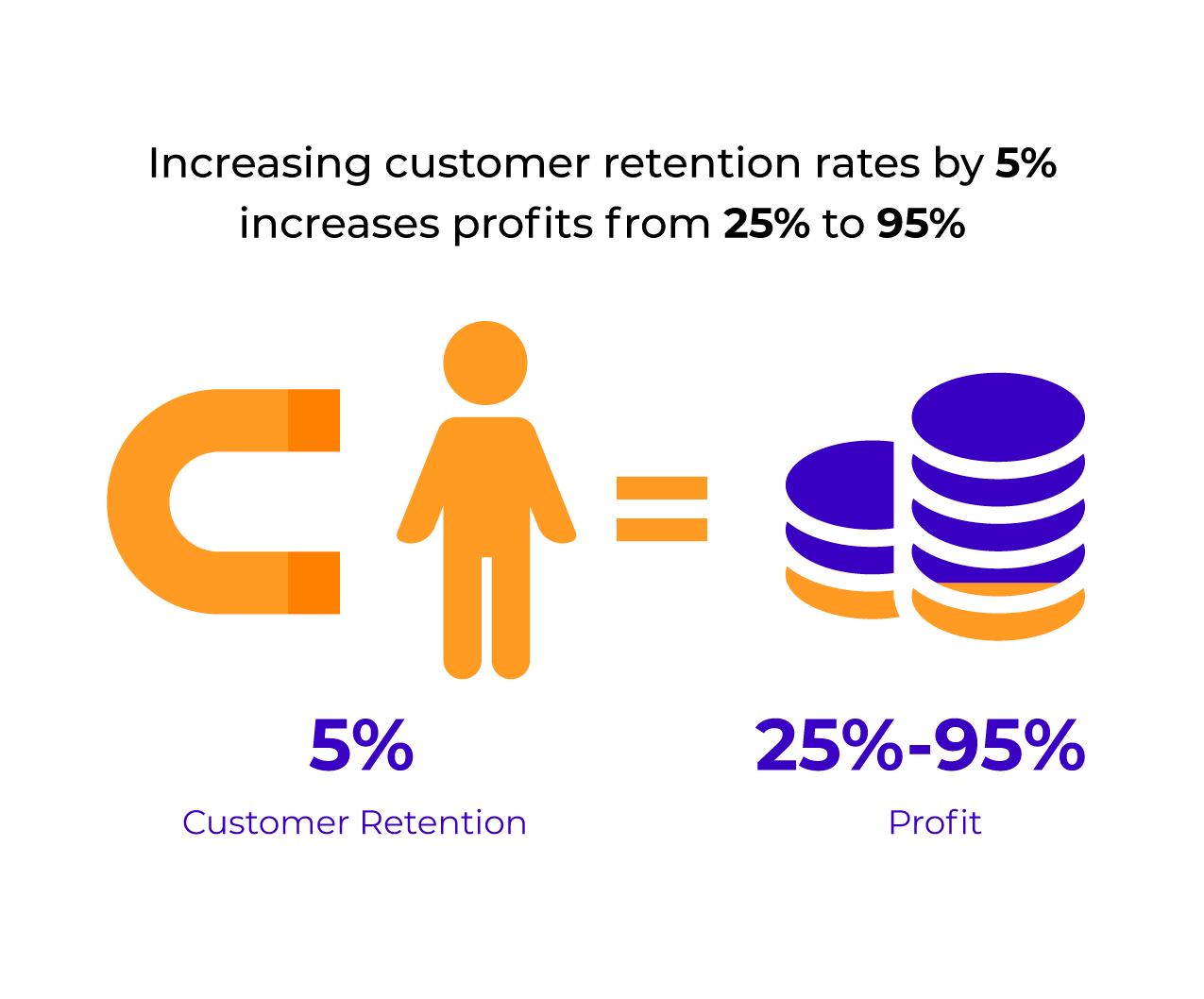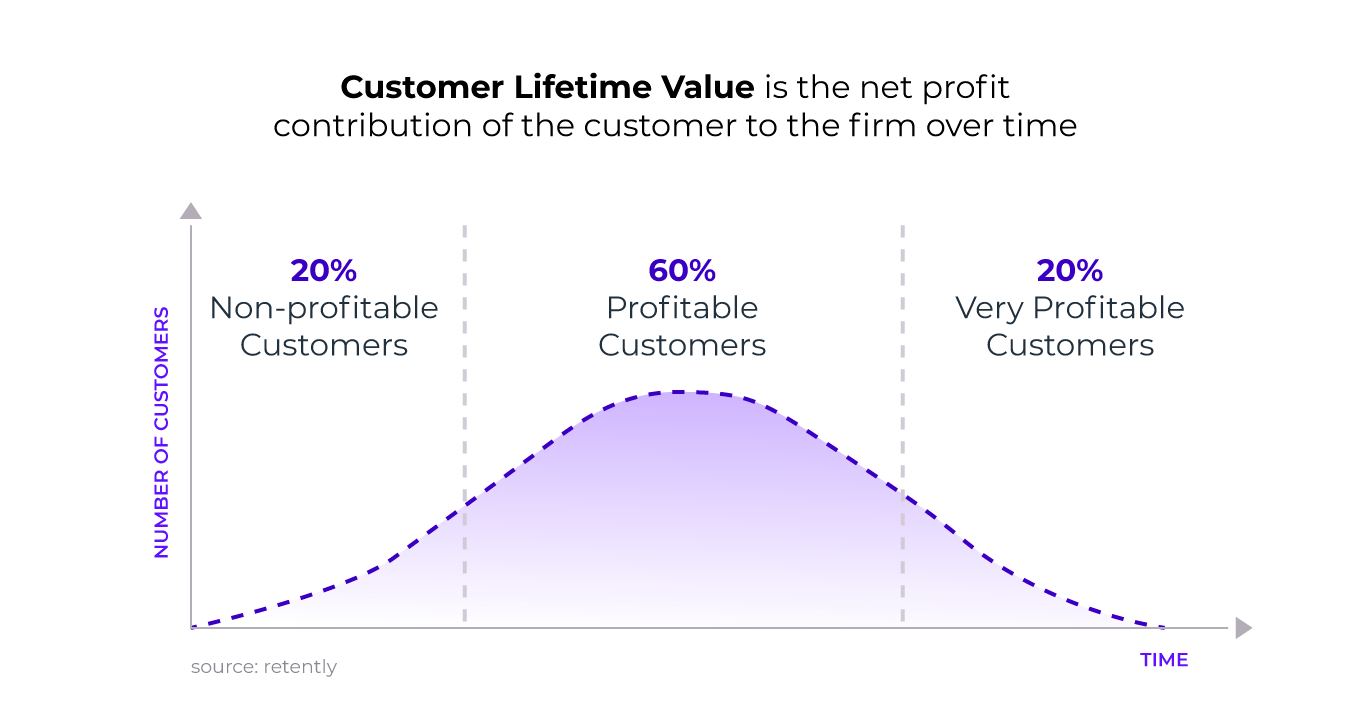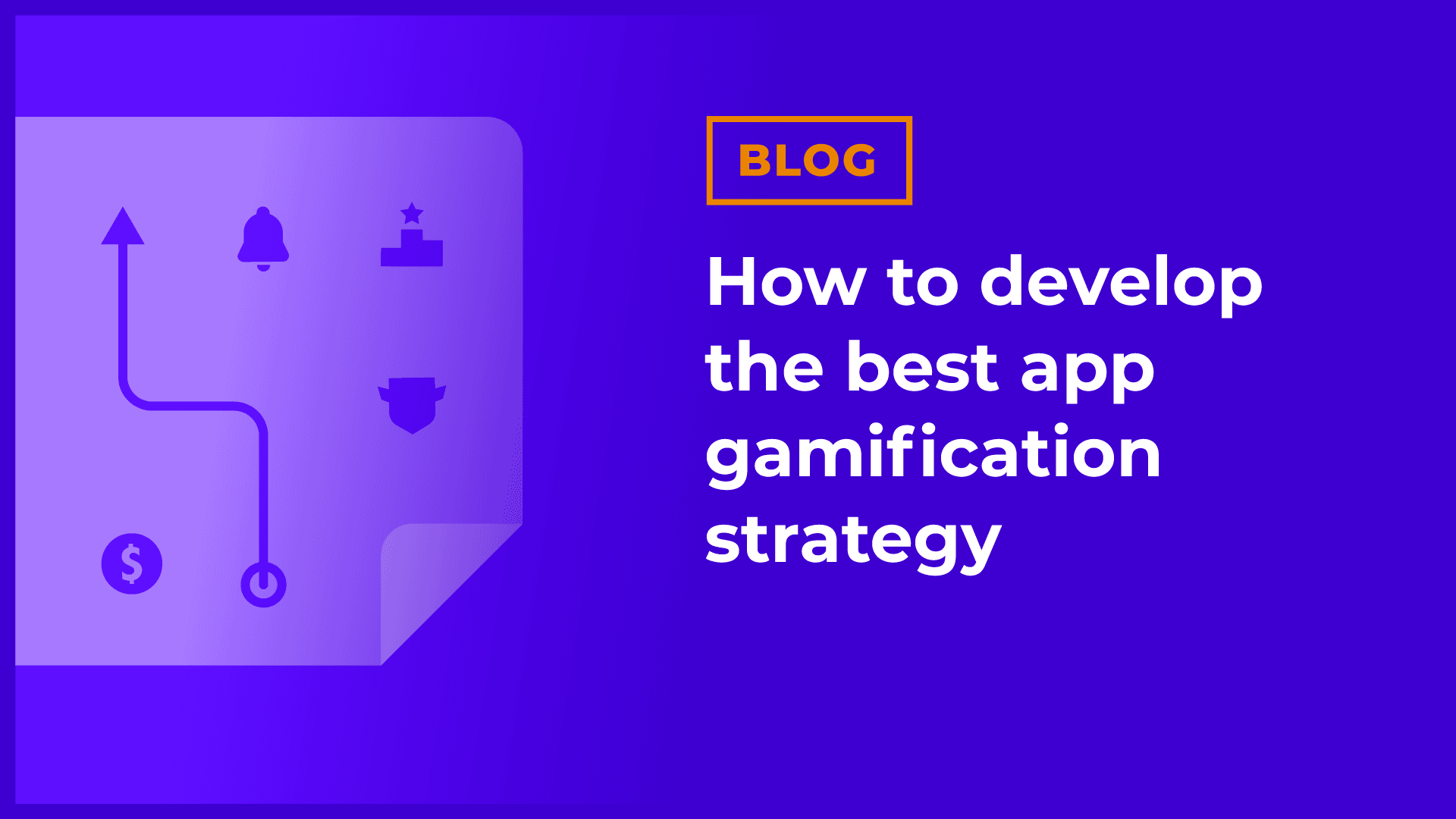

Learn your customer lifetime value first, if you want to improve loyalty
Learn your customer lifetime value first, if you want to improve loyalty
Have you ever wondered who your best customers are? You probably should. As a general rule of thumb, it’s up to 5 times more expensive to acquire a new customer than it is to retain an existing one. What if by determining the lifetime value of your customers, you can secure their loyalty? Using gamification throughout the buyer's journey can help you boost retention and engagement without additional costs.

Understanding the concept of Customer Lifetime Value is the first step toward building a more loyal and profitable customer base.
Here are some topics we’ll go over:
- What is Customer Lifetime Value?
- Will measuring Customer Lifetime Value boost loyalty?
- How to calculate Customer Lifetime Value?
- The true pain of losing a fan
- Why is fan loyalty so important?
- How to use gamification to elevate fan loyalty?
- Why gamification creates superfans
What is Customer Lifetime Value?
Let's start with the obvious question here: what is Customer Lifetime Value? Customer Lifetime Value (or CLV for short) is a metric that represents the total amount of money a customer is expected to spend in their lifetime as a customer. Thus projecting their loyalty and behavior over a lifetime.
But who needs another metric to track? The reason it’s so valuable to measure Customer Lifetime Value is because of its direct link to revenue over time. Why is that important? Well, the old rule of thumb states it is 5 times more expensive to acquire a new customer than to keep an existing one. Therefore every increase in retention has a major influence on revenue streams.
And if you think about it that makes sense. Because when you take Customer Lifetime Value and retention into account you are adding future value. In fact, a 5% increase in customer retention can increase profit by 25 to 95%. Retained customers also buy more often and spend more overall. To top it all off loyal customers are 4 times more likely to refer more customers to your brand.

This image illustrates how focusing on customer retention acts like a magnet, attracting greater profitability over time.
One principle that encompasses this well is the Pareto principle. This economic principle, better known as the 80/20 rule, states that 80% of the profits come from 20% of your customers. These are your best customers as they usually have a lower service cost and higher spendings.

The chart clearly visualizes the Pareto principle, showing that a small percentage of loyal customers contributes to a large portion of overall profits.
Will measuring Customer Lifetime Value boost loyalty?
Determining the Customer Lifetime Value can give sporting organizations a better understanding on how to allocate their marketing efforts.
Using data is a proven way to increase customer loyalty. By understanding the full customer journey and evaluating their experience along the way you discover endless opportunities. Once you see where customers churn, you can improve the experience and therefore fan loyalty.
Building an experience around customer data does not only help you win more long-term business. By fostering powerful emotional moments you can grow spendings and referrals. Actually, customers that have an emotional relationship with your brand have a Customer Lifetime Value 306% higher than average.
How to calculate Customer Lifetime Value?
To calculate your Customer Lifetime Value, you need to understand two important things about your customer first.
Start with determining the average customer value. You can discover this by multiplying the average revenue per purchase with the average number of purchases. Let’s say that you’re a football team for instance. Think about how much an average fan buys something like match tickets, drinks, merchandise in one year. Also, find how frequently that happens.

This formula breaks down the calculation for the average customer value, a key component of the overall CLV metric.
Avg customer value = avg purchase value X avg purchase frequency in one year
Next, you have to multiply the average customer value with your average customer lifespan. The higher your retention rate is, the higher your Customer Lifetime Value will be. Hence the importance of good customer retention and loyalty.
For example, an average sports fan might spend €1,200 per year on season tickets, merchandise purchases, food & beverages, and events. If that fan stays with you for 10 years that adds up to €12,000.

The final formula for Customer Lifetime Value multiplies the average customer value by their lifespan with the brand, highlighting the importance of retention.
It can also be very beneficial to calculate this for individual cases so you can learn more about your most profitable customers!
The pain of losing fan loyalty
Losing a fan, especially a loyal one, always hurts. Not only does it affect future revenue, but you also lose profitability due to already spent acquisition costs and service costs which are usually higher in the beginning. Not to mention missing out on future referrals or the risk of obtaining a poor brand image if the customer churned because of a bad experience.
That being said companies across the US are losing a staggering 62 billion per year due to poor customer service. One bad experience can have a far greater effect than 10 good experiences. Influential factors in fan loyalty are brand association and community feeling. It’s important for clubs to keep up relationships to harvest sports fan equity.
Especially in today's economy keeping fans engaged is more important than ever. For instance, the NFL teams estimate a loss of around $100 million in local revenue. It’s also noted in Deloitte’s Football Money League 2020 report that ‘Generation Z’ fans (age 16-24) have a higher loyalty towards individual players than a club. They also tend to divide their watching time to the best match set-ups instead of following a favored team.
EY Global - "Aging sports fans and changing consumer habits have sports franchises facing an uphill battle to grow revenue even as costs continue to rise."
Why fan loyalty is so important
There is no one more loyal than a sports fan! These are often fans for life. They spend countless time, money, and energy on their teams. Superfans drive revenue in many different ways. First off, building fan loyalty helps you gain a competitive advantage in the market. Apple, for example, has a reputation for charging higher prices. However, their experience is so great they have fans who are more than willing to pay the price.
Research by consulting company PWC - "The impact of superfans has never been more powerful. The explosion in digital communications and social media drives an upsurge in the number, influence, and revenue potential of the superfans. As a result, superfans represent an increasingly valuable source of incremental revenue. This can be tapped by offering them a premium experience, such as a pre-release or exclusive content in return for a higher subscription or ongoing advocacy on social media."
How to use gamification to elevate fan loyalty
81% of consumers say loyalty programs made them more likely to continue doing business with brands. However, most loyalty efforts in today’s business world are built on external rewards systems. While this strategy has its benefits such as triggering the initial interest and desire for an activity, it has proven insufficient in the long term.
Research has shown that people need intrinsic motivation to stay engaged and remain brand loyalty. Luckily gamification ensures sustainable engagement by making the experience more intrinsically motivating.
People are driven by emotions they receive through progress and achievements. Recommendations to improve loyalty include focusing on tactics that build member relationships and identification with the team. Let’s take a look at some examples from the sports world!
Gamification creates superfans
First off there is the PSG Advent calendar. The French football club distributed throughout the entire month of December 2019. Fans were invited every day to discover a new box on the calendar with the chance of winning gifts and discounts. As a result, they gained over 180,000 participants.
Real Madrid is working on digital engagement as well. Fans want to be engaged constantly. That’s why creating a digital fan engagement platform can extend live experiences with content like pre-match analytics, highlights, and personalized notifications or recommendations. The club’s efforts helped digital revenues grow by 30%.

Digital platforms are essential for extending the fan experience beyond live events, offering opportunities for continuous engagement and gamification.
Finally, the gamification software company StriveCloud worked on a case with the esports platform Kayzr as well. The platform used to reward gamers with coins which they could later use to buy prizes. However, to scale up Kayzr needed a better way to reward users without the risk of losing massive engagement.
Up for a challenge, the StriveCloud team redesigned the experience to create Kayzr 4.0. A renewed version with built-in elements of surprise and empowerment and competition. One of the features they installed was a lottery system. So, while the traditional coin value lowered, players could now win tickets to participate in the lottery and bet on certain prizes!

The Kayzr lottery system is a perfect example of using gamification to create excitement and reward users in a scalable way.
To secure fan loyalty the system was upgraded with new daily and weekly challenges. By completing these players can level up and get rewards. Part of the reward is the progress in their experience meters. Which is another feature that stimulates social participation. The gamification helped Kayzr grow daily active usage with 60%. Additionally, the platform gained over 350% more users and got one year of 24/7 eyeball time in just one day!
Wrap up
In conclusion: understanding Customer Lifetime Value may be the first step to creating superfans. Once you find the true value of your fans and understand their journey, you can design a significantly better experience than motivates good fan behaviors.
Reward programs & gamification are shown to be beneficial both in generating fan loyalty and in driving business goals. However, it takes careful strategy and testing to ensure success. Finding the right motivations can help you scale your user base without increasing loyalty spending just as Kayzr did.
Related Posts

How Insight Timer has the best user retention in wellness apps with gamification
In 2020, over 10,000 years were spent on the Insight Timer app! The app is so prominent in user retention and attention that it garners over 63% of all time spent on meditation apps. So how did a challenger outcompete apps like Headspace and Calm? With a clever gamification strategy that has user retention at its heart.

How to develop the best app gamification strategy - everything you need to know!
Looking to boost your mobile app engagement? Gamification can enhance it by as much as 50%! Because every app is different, it's crucial to have your own personalized gamification strategy that supports your business goals. This article briefly covers the ins and outs of developing your own gamification strategy.

